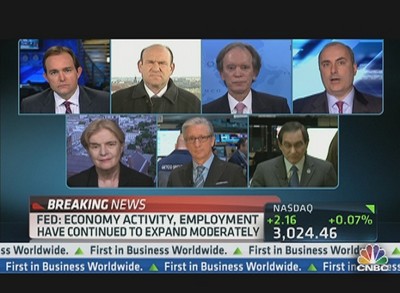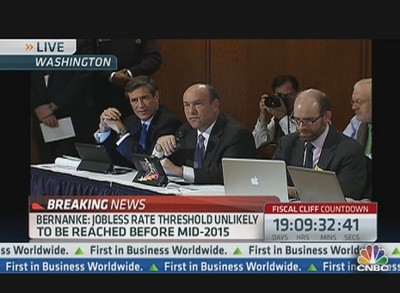Property Launches & Investments
This is some blog description about this site
Fed to Keep Easing, Sets Target for Rates
- Font size: Larger Smaller
- Hits: 1200
- 0 Comments
- Subscribe to this entry
- Bookmark
The Federal Reserve met market expectations Wednesday with another round of easing, this time with a pledge to keep interest rates low until unemployment falls below 6.5 percent and inflation tops 2.5 percent. Economists had been expecting the Federal Reserve to accelerate its debt buying program, known as quantitative easing, to the tune of another $45 billion a month, and the central bank came through.
Coupled with its move to buy $40 billion of mortgage-backed securities a month, that would bring the Fed balance sheet expansion to another trillion dollars or so in 2013 and $4 trillion overall.
The move essentially keeps the Fed in the easing business indefinitely, as the jobless rate has been stubbornly high for the past four years and shows little inclination lower except for statistical gyrations caused by people leaving the workforce.
Fed Chairman Ben Bernanke pointed out at an afternoon news conference that even after the employment and inflation targets are triggered, that won't lead to an automatic raising of rates.
He also expressed fear over the "fiscal cliff" of tax hikes and spending cuts set to take place automatically at the end of the year. Bernanke said even the Fed's massive balance sheet expansion wouldn't be enough to stave off the effects, though the Fed may accelerate its asset purchases should cliff take effect.
"We cannot offset the full impact of the fiscal cliff," he said. "It's just too big given the tools that we have available and the limitations on our policy toolkit at this point."
In its statement, the Fed's Open Market Committee said the economy is growing gradually but needs assistance in the form of the dual measures it agreed to at its final meeting of 2012.
"Taken together, these actions should maintain downward pressure on longer-term interest rates, support mortgage markets, and help to make broader financial conditions more accommodative," the committee said.
Following the decision,stocks rose and interest rates turned a shade lower on the day as the benchmark 10-year Treasury note yielded 1.65 percent.
The Fed also released its economic projections for 2013 and beyond, and they were largely unchanged from the targets released in September.
Unemployment in 2013 is expected to be in the range of 6.9 percent to 7.8 percent, while economic growth will be modest, with gross domestic product rising 2.0 percent to 3.2 percent. Both were lower than September estimates, indicating the economy is likely to have little to show for all of the easing outside of not getting any worse.
"The conditions now prevailing in the job market represent an enormous waste of human and economic potential," Bernanke said. "A return to broad-based prosperity will require steady improvement in the job market, which in turn requires stronger economic growth."
The easing move comes as the Fed's so-called Operation Twist was winding to a close. The program entailed selling shorter-term debt and buying long-dated securities in an effort to drive down lending rates.
"While few expected the Fed to move this quickly on adopting official targets for inflation and unemployment, the premise had been floated earlier this year and so while the timing is surprising, the advance in tying these variables to the mast is not," said Andrew Wilkinson, chief economic strategist at Miller Tabak.
The Fed's unprecedented levels of intervention are aimed at keeping liquidity flowing through the financial system and are targeted specifically at bringing down the 7.7 percent unemployment rate.
With inflation excluding energy and food costs considered tame, the Fed has felt free to continue its easing programs while economic growth remains mired and agreement on fiscal policy elusive in Washington.
"To support continued progress toward maximum employment and price stability, the Committee expects that a highly accommodative stance of monetary policy will remain appropriate for a considerable time after the asset purchase program ends and the economic recovery strengthens," the committee said.
The FOMC previous has indicated it will keep its targeted funds rate near zero until well into 2015, and Wednesday's statement simply reiterated that position.
Earlier in the year Bernanke coined the term "fiscal cliff" to describe the tax increases and spending cuts that will take effect automatically unless Congress agrees to a deal. The austerity triggers were put in place as deficit-reduction measures.
He has said the central bank will do its part to keep the economy running but needs help from Washington in controlling spending but not so radically that it would constrain growth. Economists expect the country to enter recession if the full cliff-related measures take effect.
The committee made no mention of the cliff nor of fiscal policy in general in its statement.
Richmond Fed President Jeffrey Lacker was the only dissenter of the 12 voting FOMC members.
Source: CNBC
Published: Wednesday, 12 Dec 2012
By: Jeff Cox | Finance Editor



